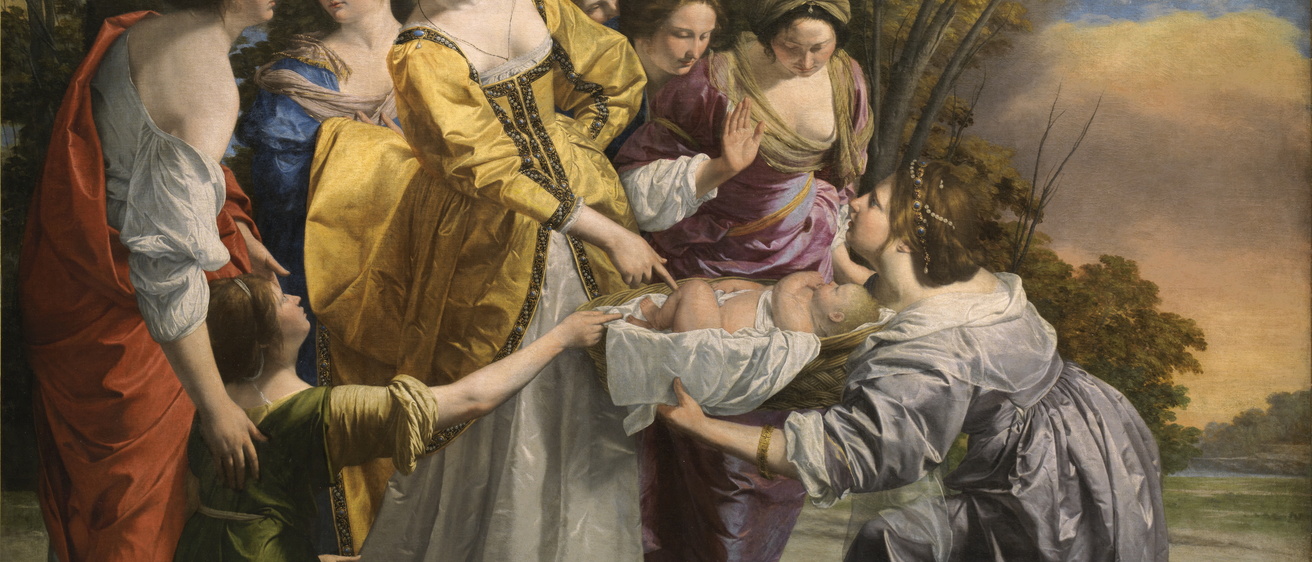Why was baby Moses placed in a basket and set afloat on the Nile River? It's a fascinating question, especially if you are trying to save a child's life.
The story of the baby Moses in a basket being placed in the Nile River and saved by Pharaoh’s daughter is one of the iconic scenes of the Exodus story. And yet, the choice of a basket in a river famed for its predators like crocodiles and hippopotami seems like an odd choice. Surely there must have been other, better options.
Now, the story of baby Moses isn't the only story of a baby placed into a basket in a river only to be rescued and raised into a great hero. The legendary founder of Rome, Romulus, and his brother Remus were both said to have been left in a basket as newborns in the Tiber River in a similar effort to avoid a death sentence. The basket was eventually caught in the roots of a fig tree on the riverbank, and the twins were discovered by a female wolf. The she-wolf nursed the babies and a woodpecker fed them until they were discovered by a shepherd, who then brought up the twins. While this story is set prior to the founding of Rome around 750 BCE, the earliest known written account of this myth dates to the late 3rd century BCE. A similar story is told of the Sumerian king Sargon I "The Great" (r. 2334–2279 BCE). According to the cuneiform inscription known as The Legend of Sargon of Akkad (c. 2300 BCE), his mother was a priestess of the goddess Inanna who could neither reveal her pregnancy nor keep the baby. She placed him in a basket sealed with pitch and set him adrift on the Euphrates River. The baby Sargon was ultimately discovered by Akki, the drawer of water, who adopted him as his son and raised him.

Now, we have no way of knowing whether either of these stories inspired or influenced the story of baby Moses. For all we know, the Bible could be reporting the objective, historical facts of the events as they took place. It could have been an act of sheer desperation—a mother so desperate to hide her baby from the royal death sentence issued against all male Hebrew newborns in Exodus 1:22 that she would risk the almost certain death of her defenseless child in a basket in the Nile River.
But let's assume for a moment that there is something more going on here than just a reporting of the facts, and that the author and editors of this beautiful tale may have shaped it in the centuries before it was written down. One of our first options would be to check some of the key words from the story in their original Hebrew language. Translations often obscure connections that are obvious in the original language, and that is certainly true in this case with the word that is translated into English as "basket."
One Hebrew word for basket is sal (סל), used in Genesis 40:16 to describe a bread basket. Another word for basket is ṭeneʾ (טנא), described in Deuteronomy 26:2 as a harvest basket. Still another word for basket is dūd (דוּד), a two-handled basket mentioned in 2 Kings 10:7. But none of these words are used to describe the basket that Moses's mother, Jochebed, used to conceal Moses in the Nile.
Exodus 2:3 says that Moses is placed in a tevah (תבה). Interestingly, this Hebrew word doesn't really mean "basket." In fact, a search for this word reveals that it appears multiple times, but only in one other story in the Hebrew Bible—the story of the great flood! The Hebrew word tevah (תבה) is the word for the ark that Noah builds to survive the flood in Genesis 6–9. Furthermore, in addition to Exodus 2:3 and 5—where we find the only two references to a tevah (תבה) outside of the flood story—the connection to Noah's ark is strengthened by the description of Moses's "ark" being waterproofed with "bitumen and pitch"—just like the ark in Genesis 6:14!
"When she could hide him no longer she got a papyrus basket (תבה, tevah) for him, and plastered it with bitumen and pitch;" — Exodus 2:3
"Make yourself an ark (תבה, tevah) of cypress wood; make rooms in the ark (תבה, tevah), and cover it inside and out with pitch." — Genesis 6:14
While they are nowhere near the same size or materials, the details of the two stories are designed to echo one another. Both involve biblical heroes facing certain doom, only to be saved by special boxes covered in pitch that float on bodies of water, relying only on faith in the deity to protect them. A baby lies helpless in an ark seemingly at the whims of the Nile, while Noah is shut inside an ark floating amidst a chaotic flood. They are both helpless and completely dependent upon God to protect and deliver them.
Making this verbal connection at the beginning of the Exodus narrative also provides a narrative guide with which to interpret the Exodus story. Just like the earlier flood story, the Exodus account will begin with the chaos of divinely-sanctioned destruction and death, but God will protect his chosen and bring them through the depths of the abyss to begin his creation anew with his chosen people.
